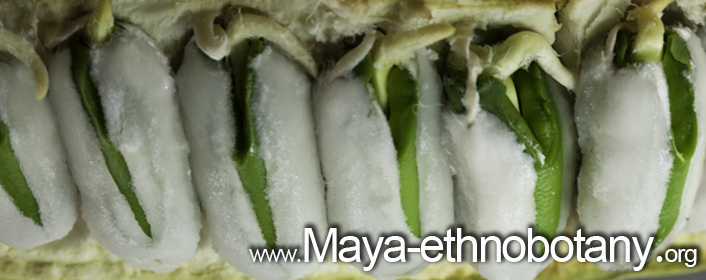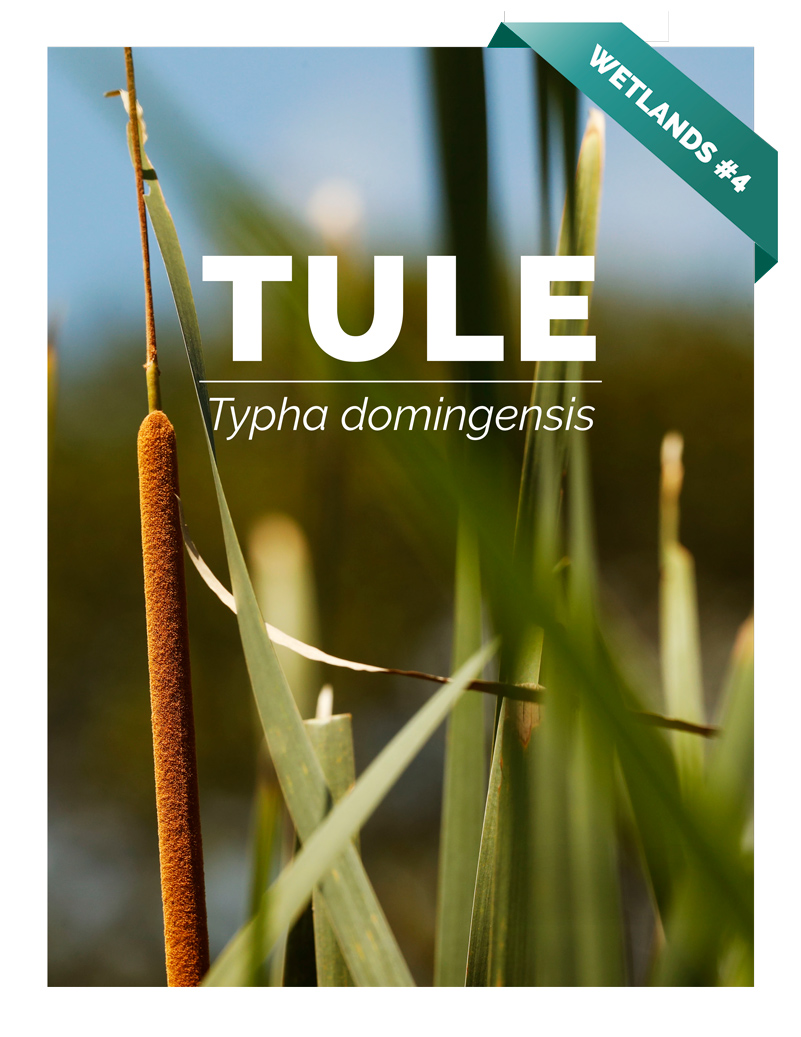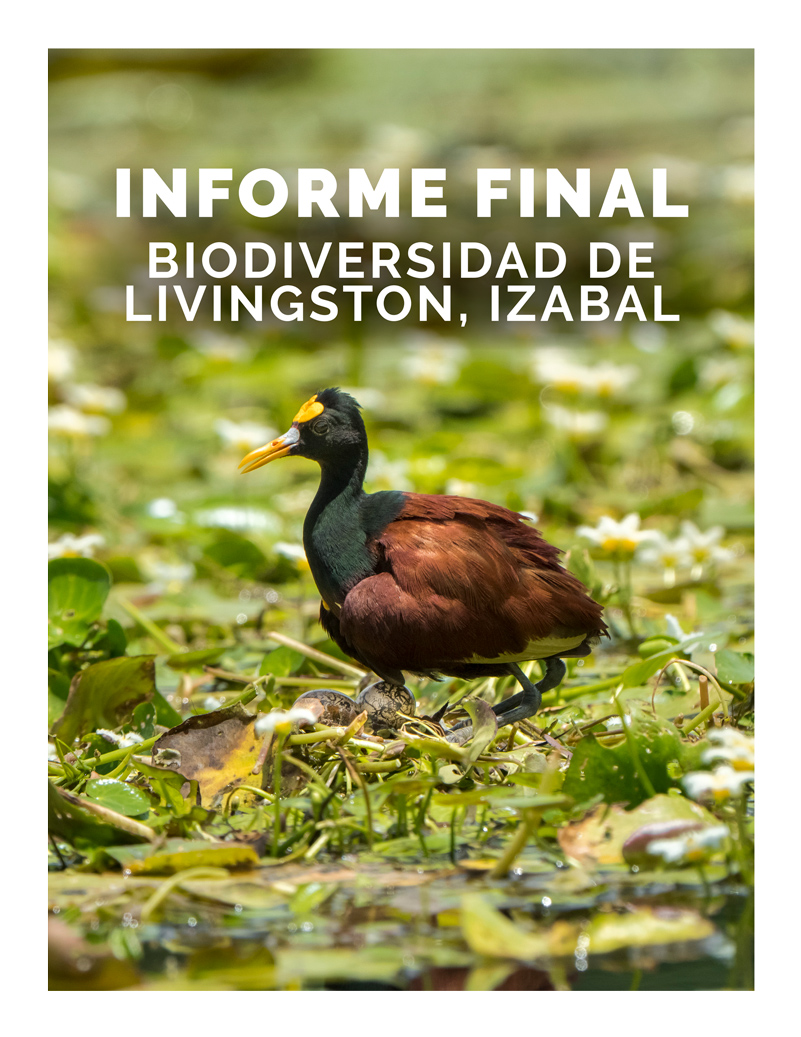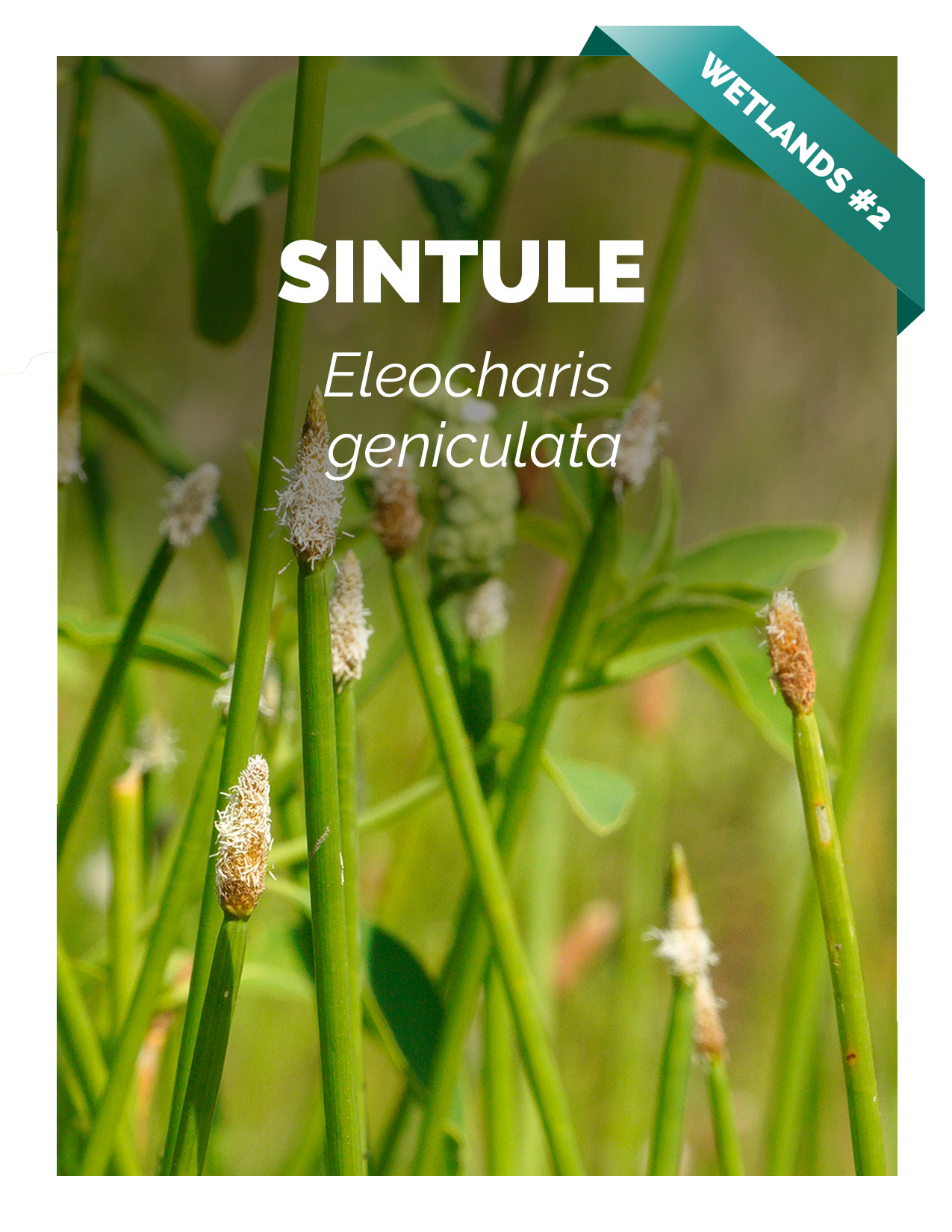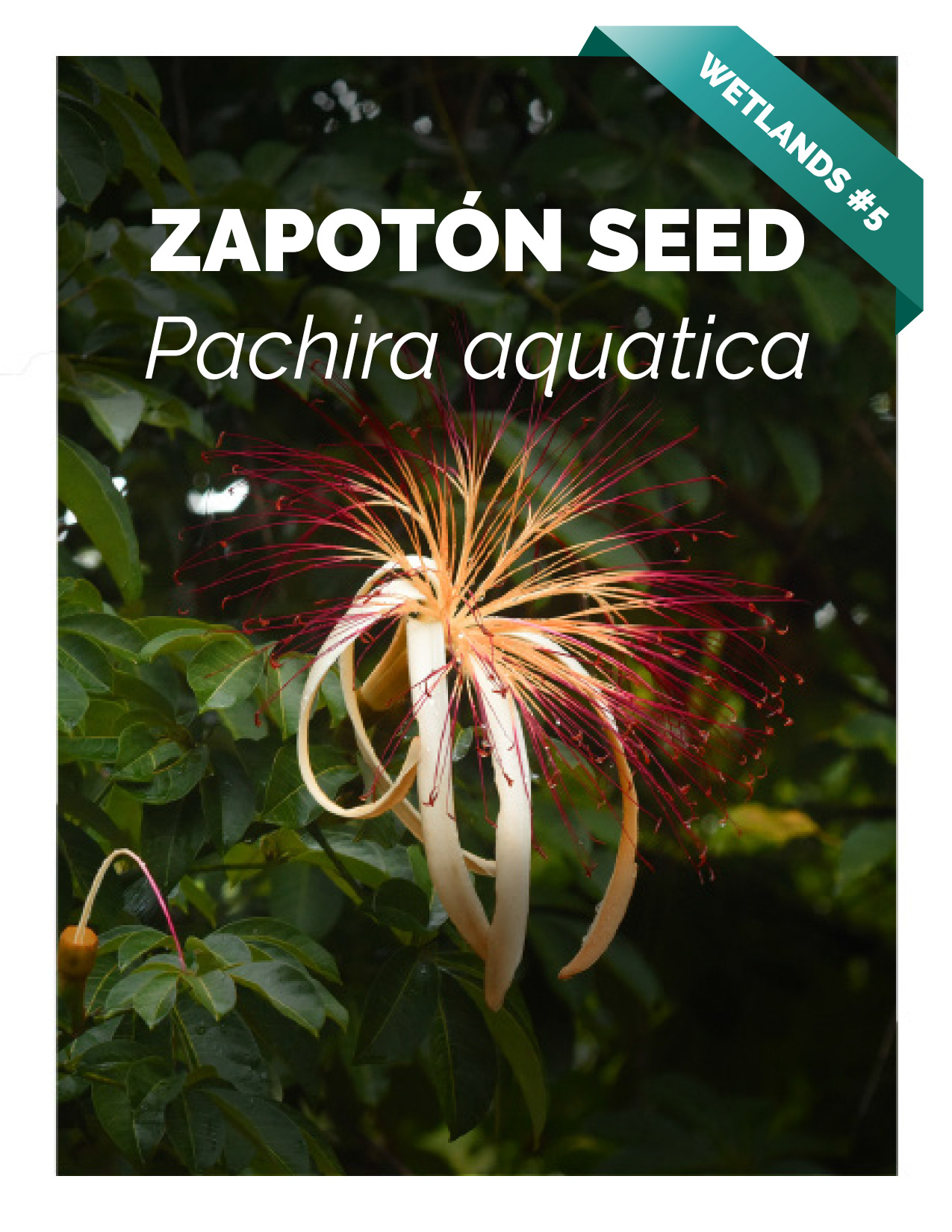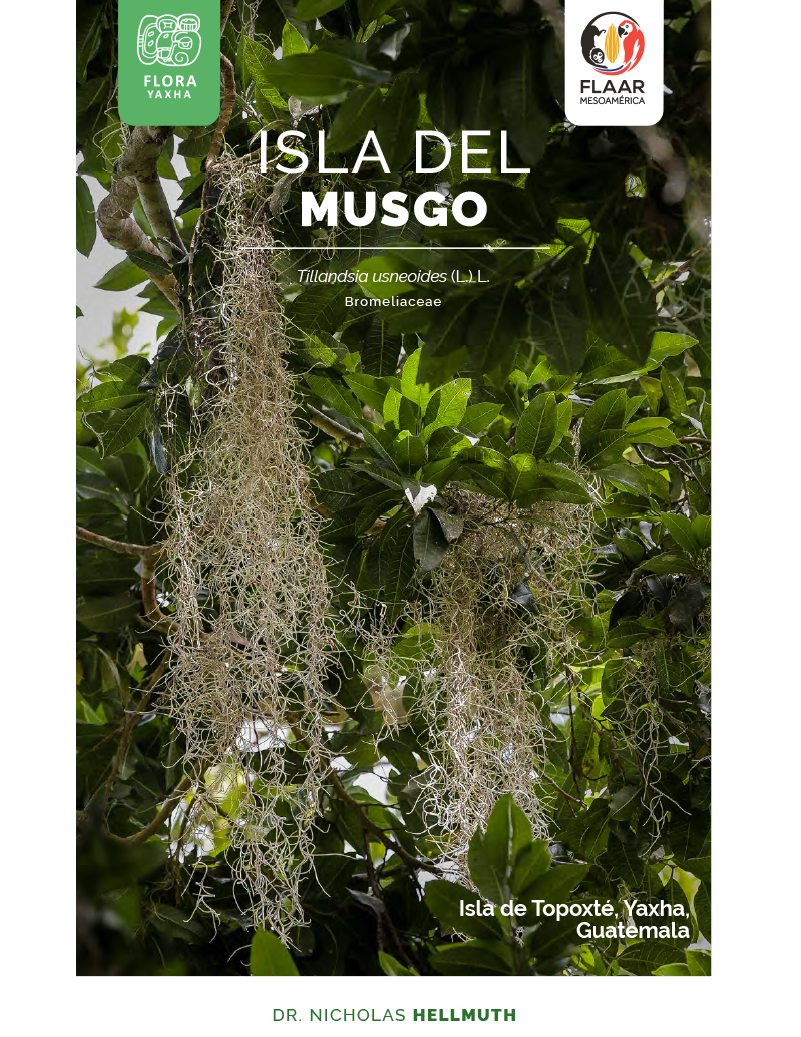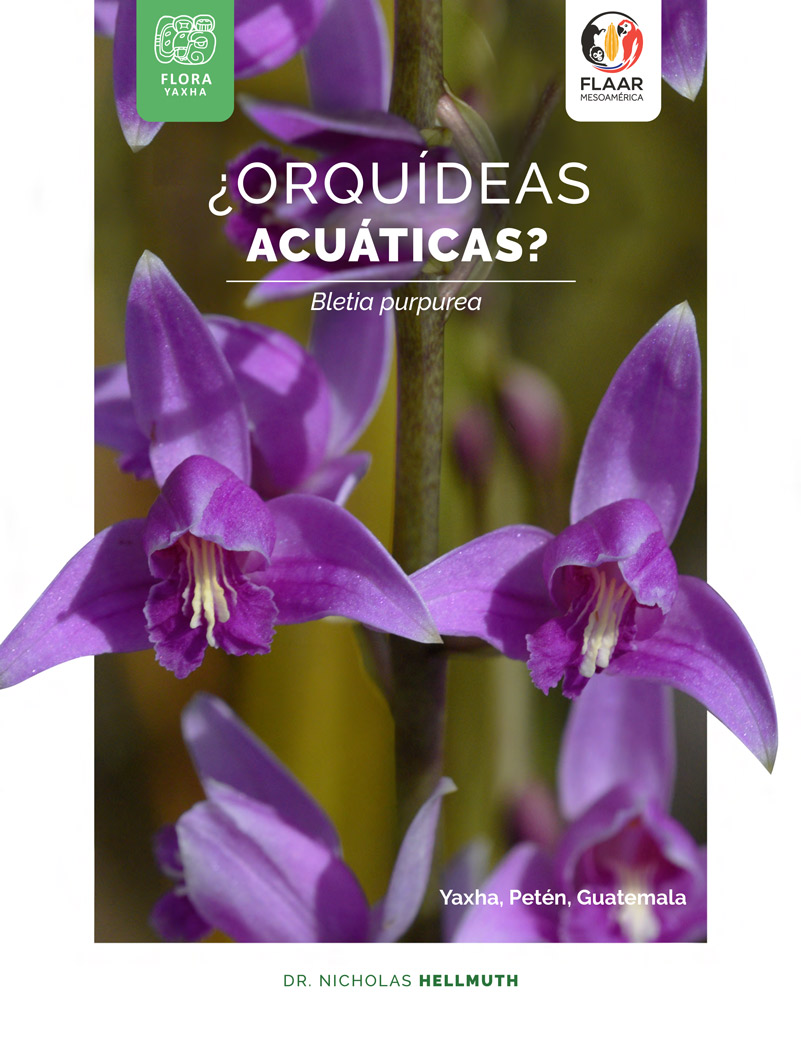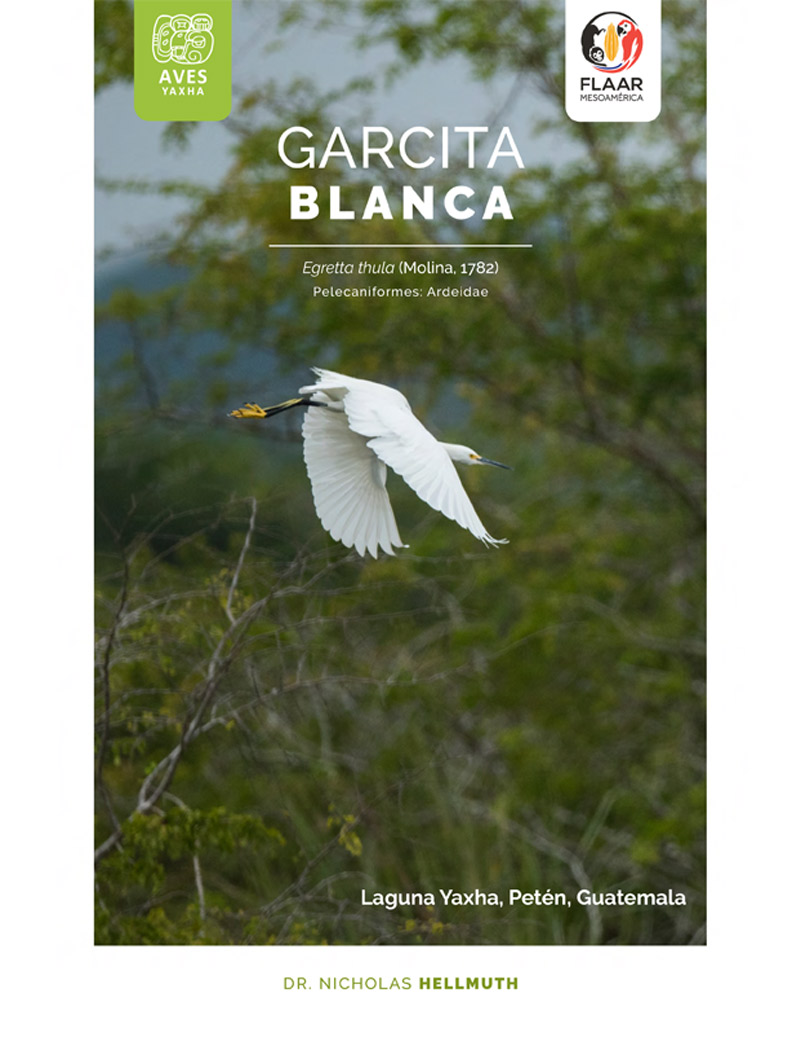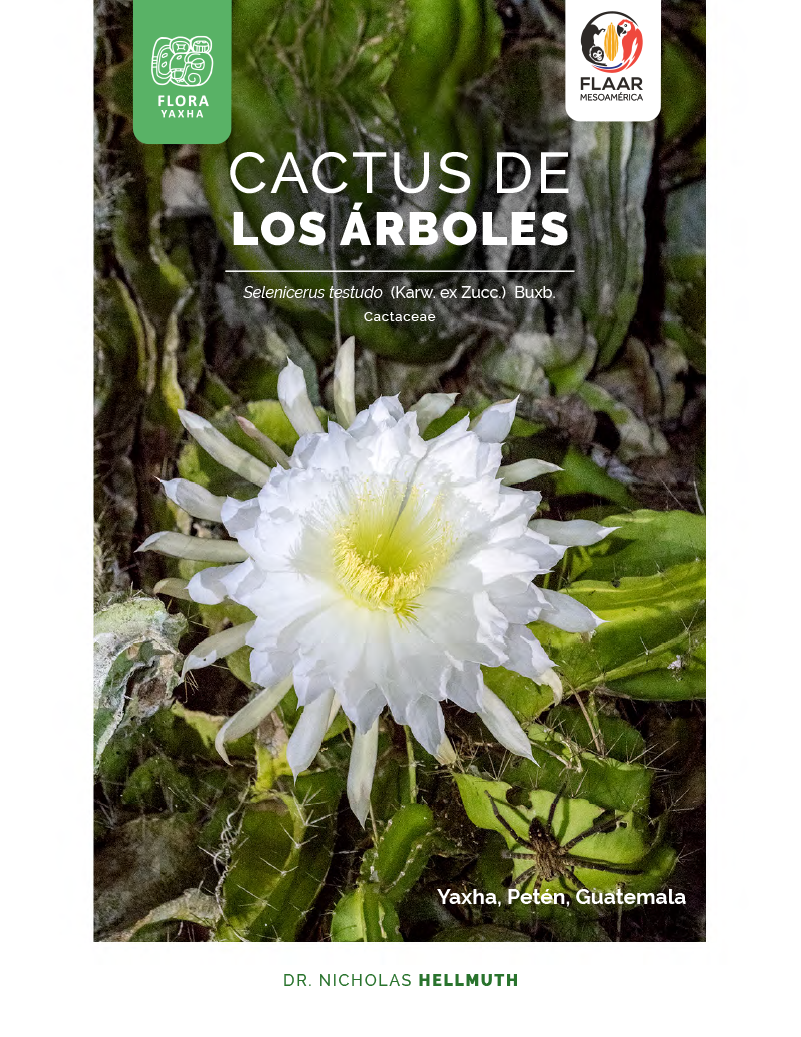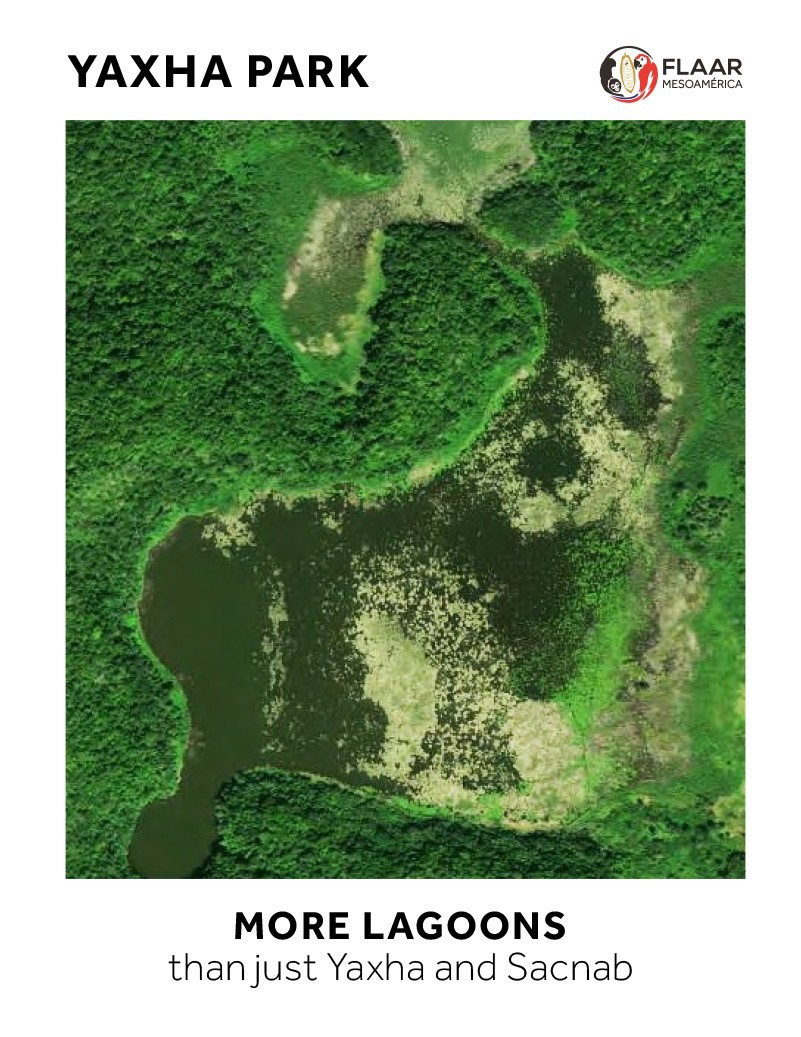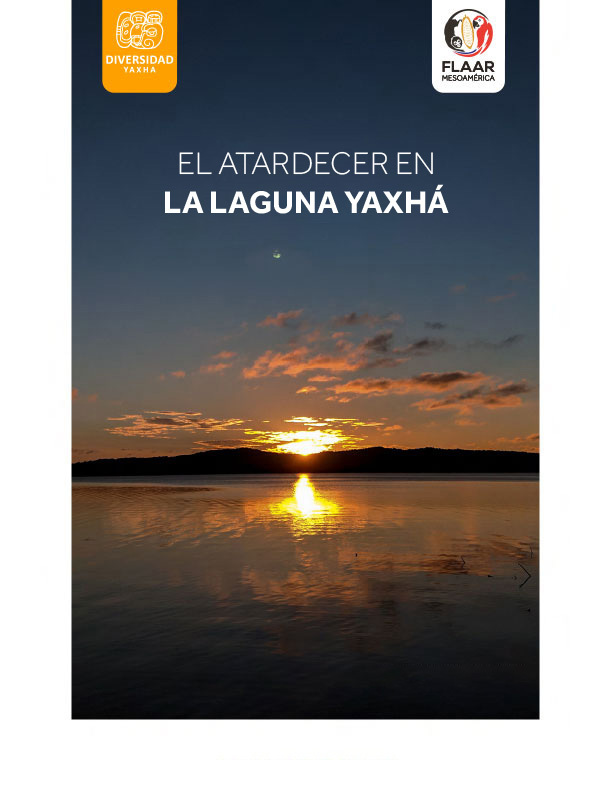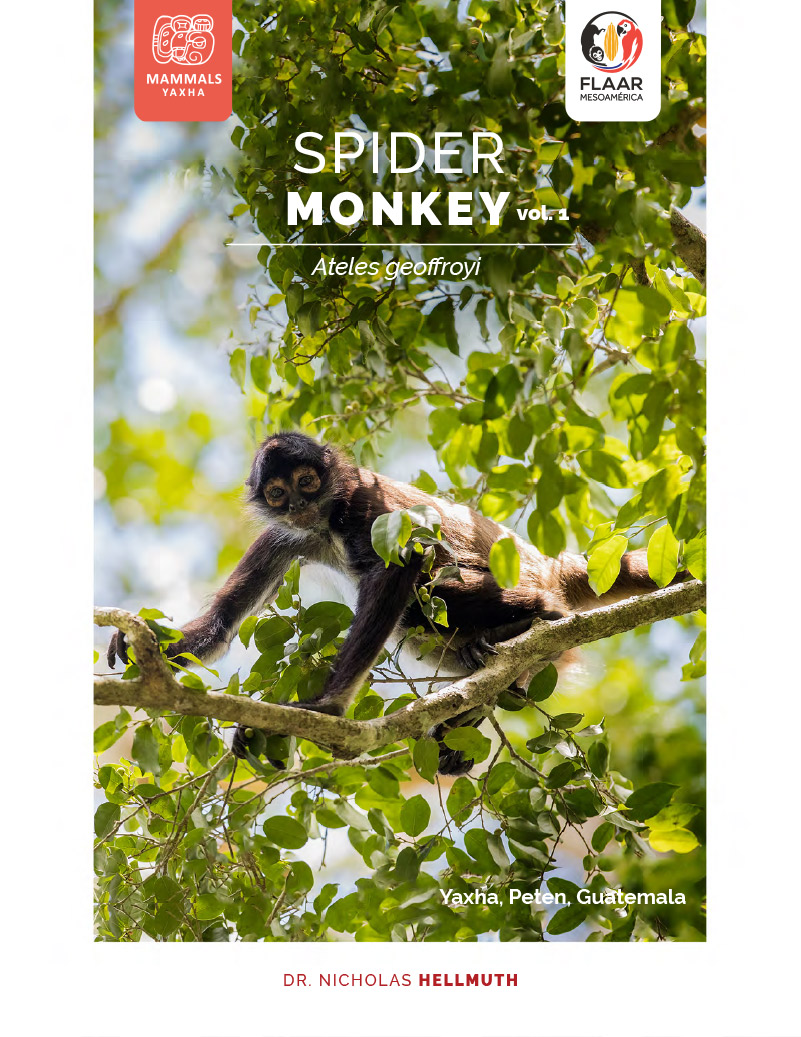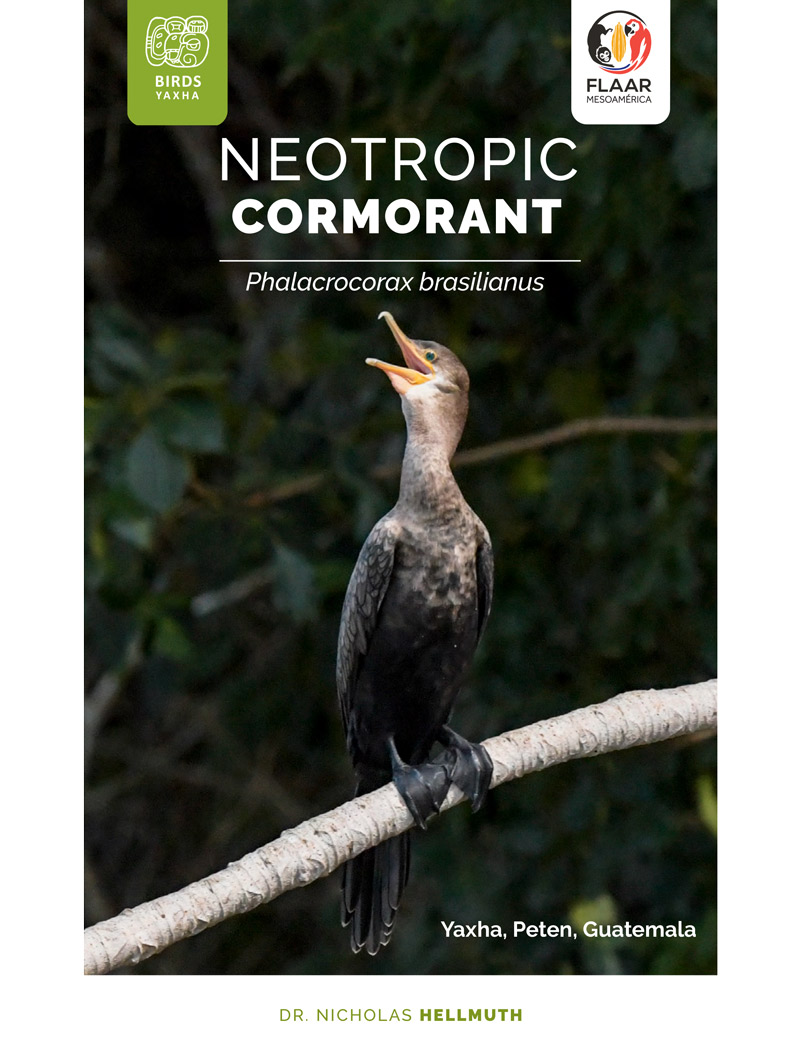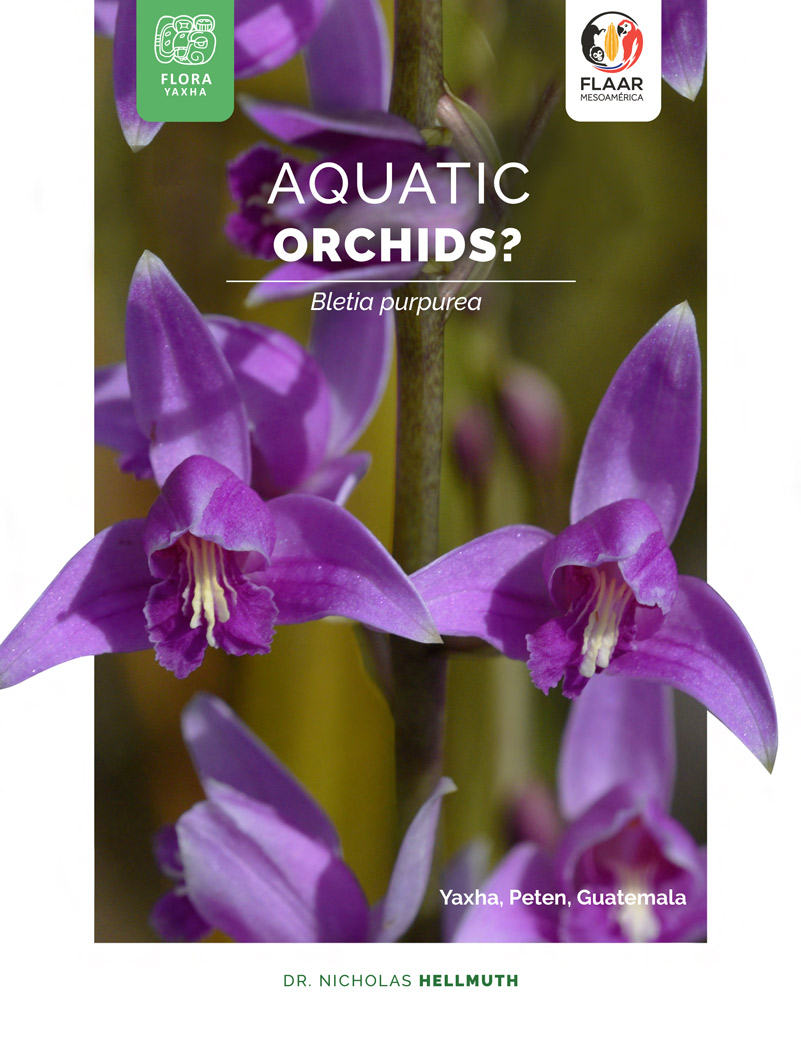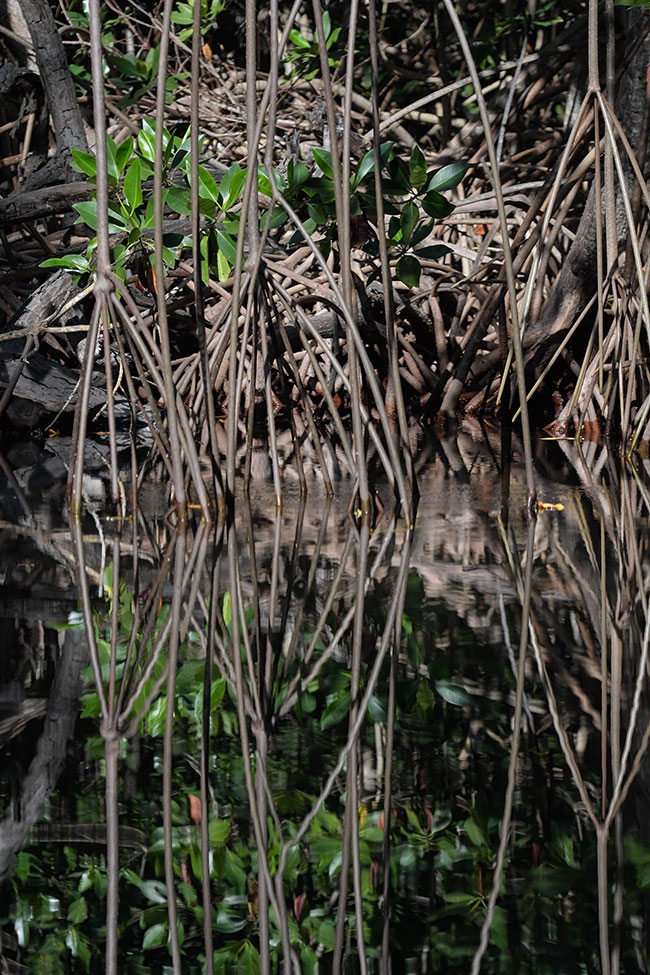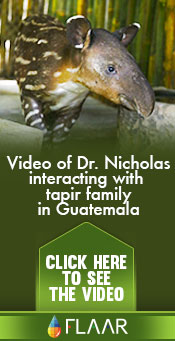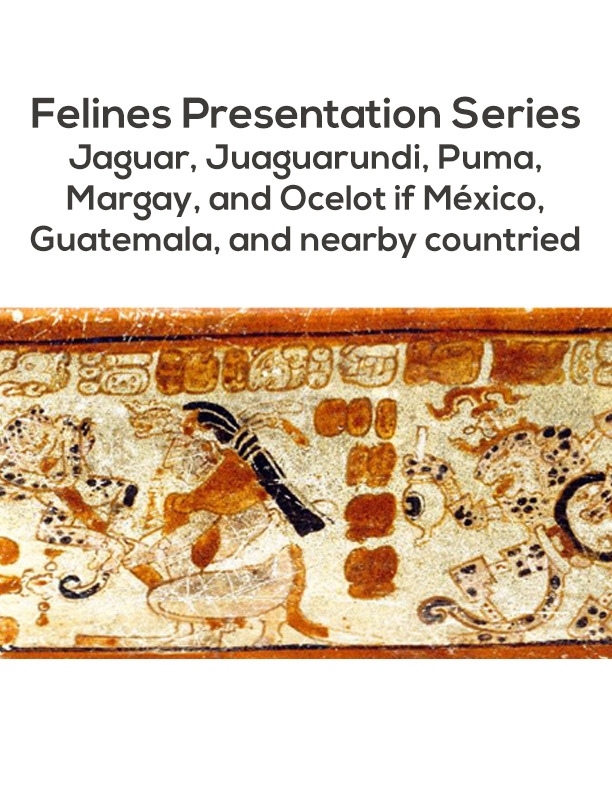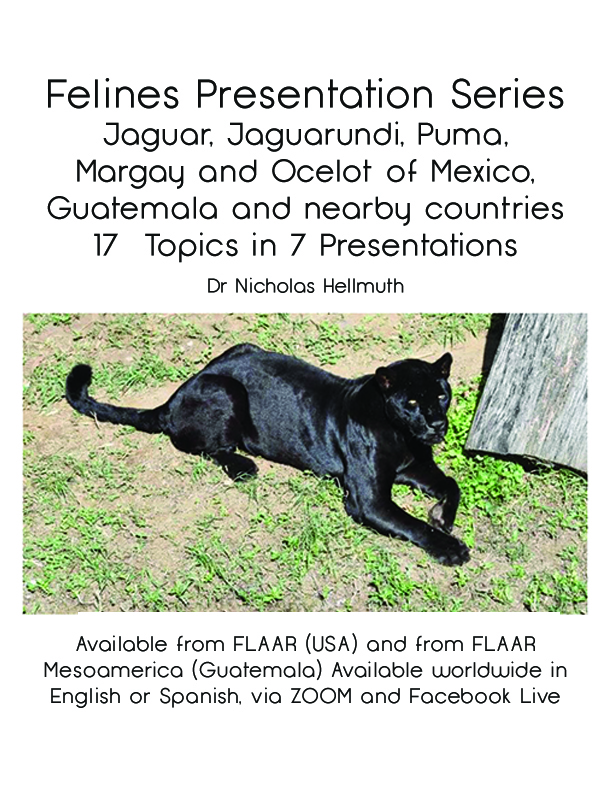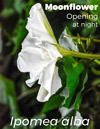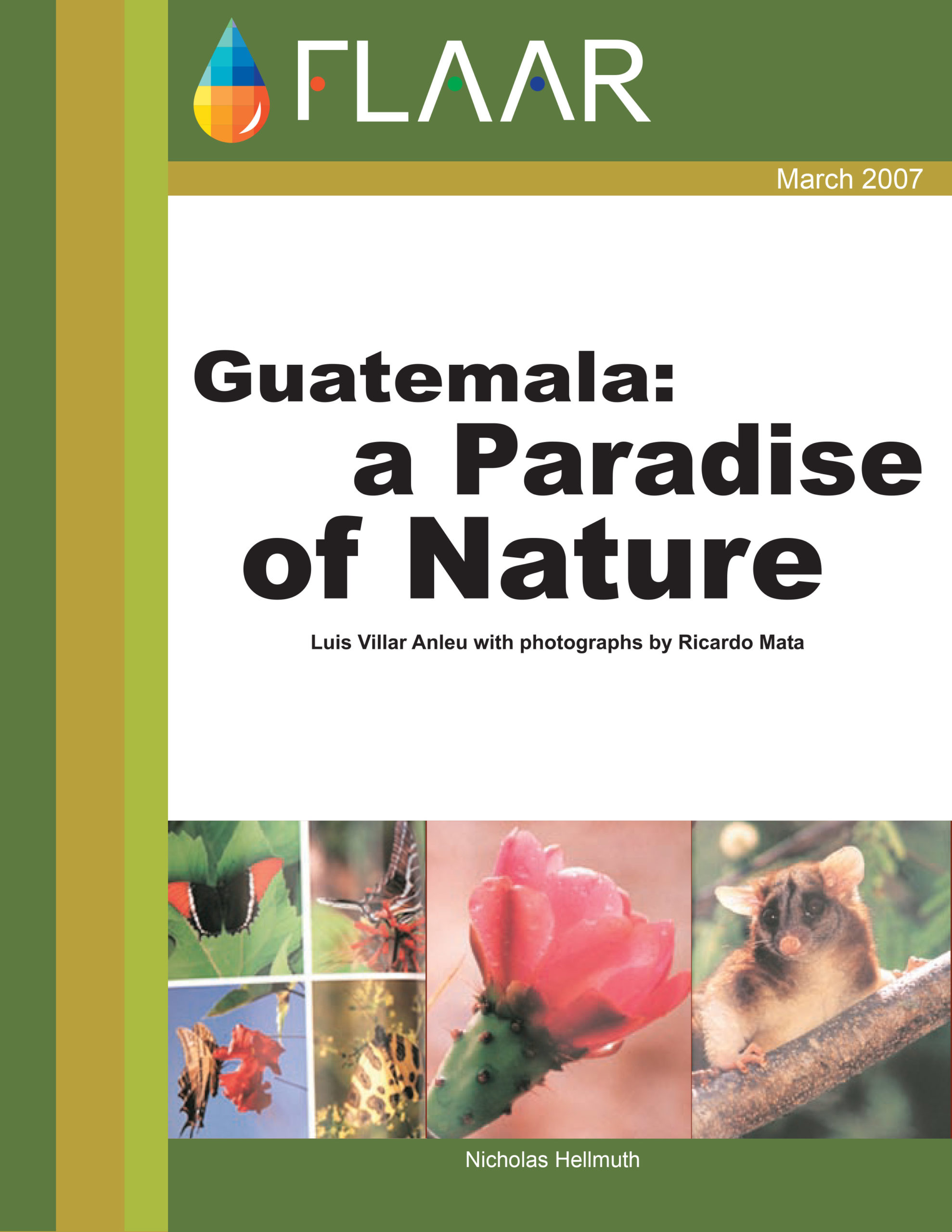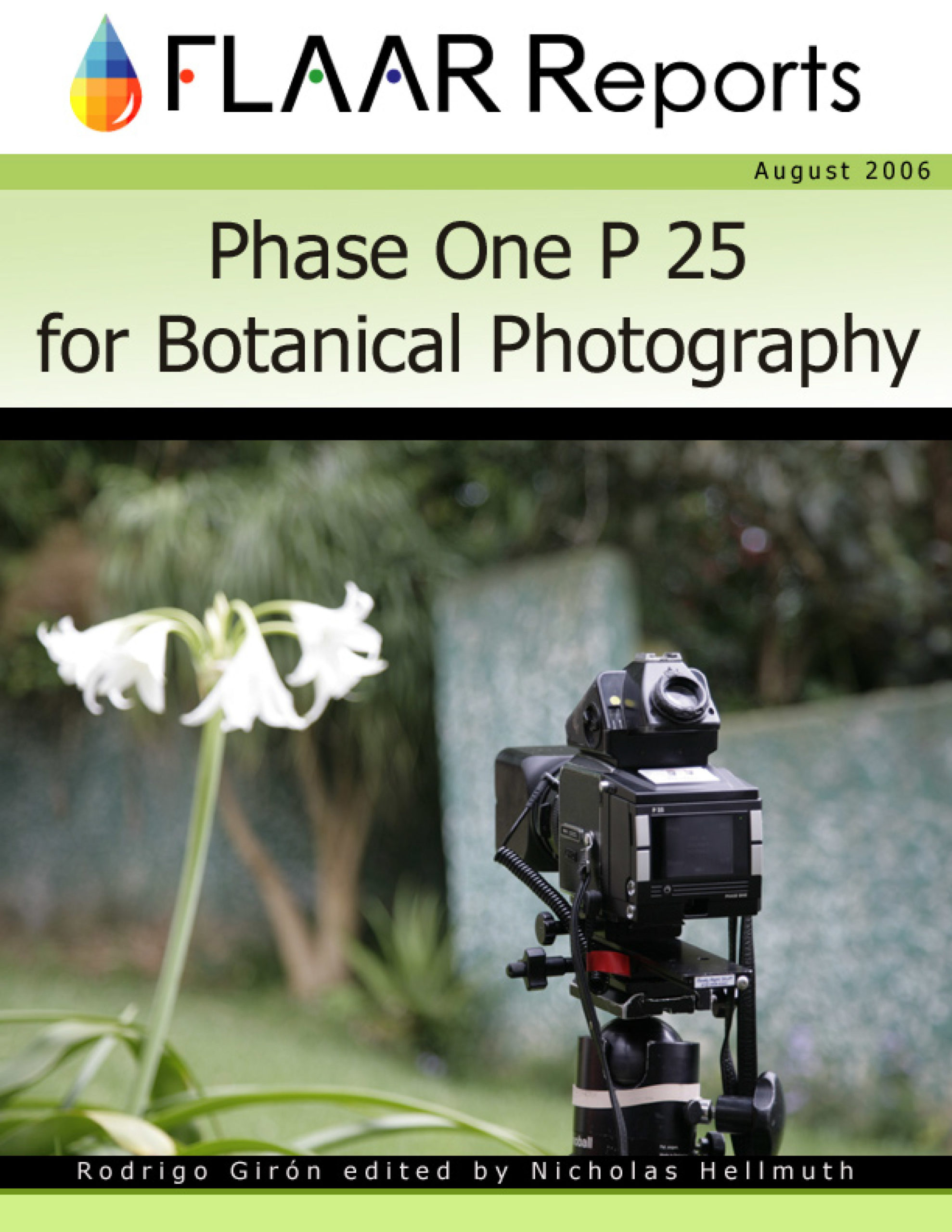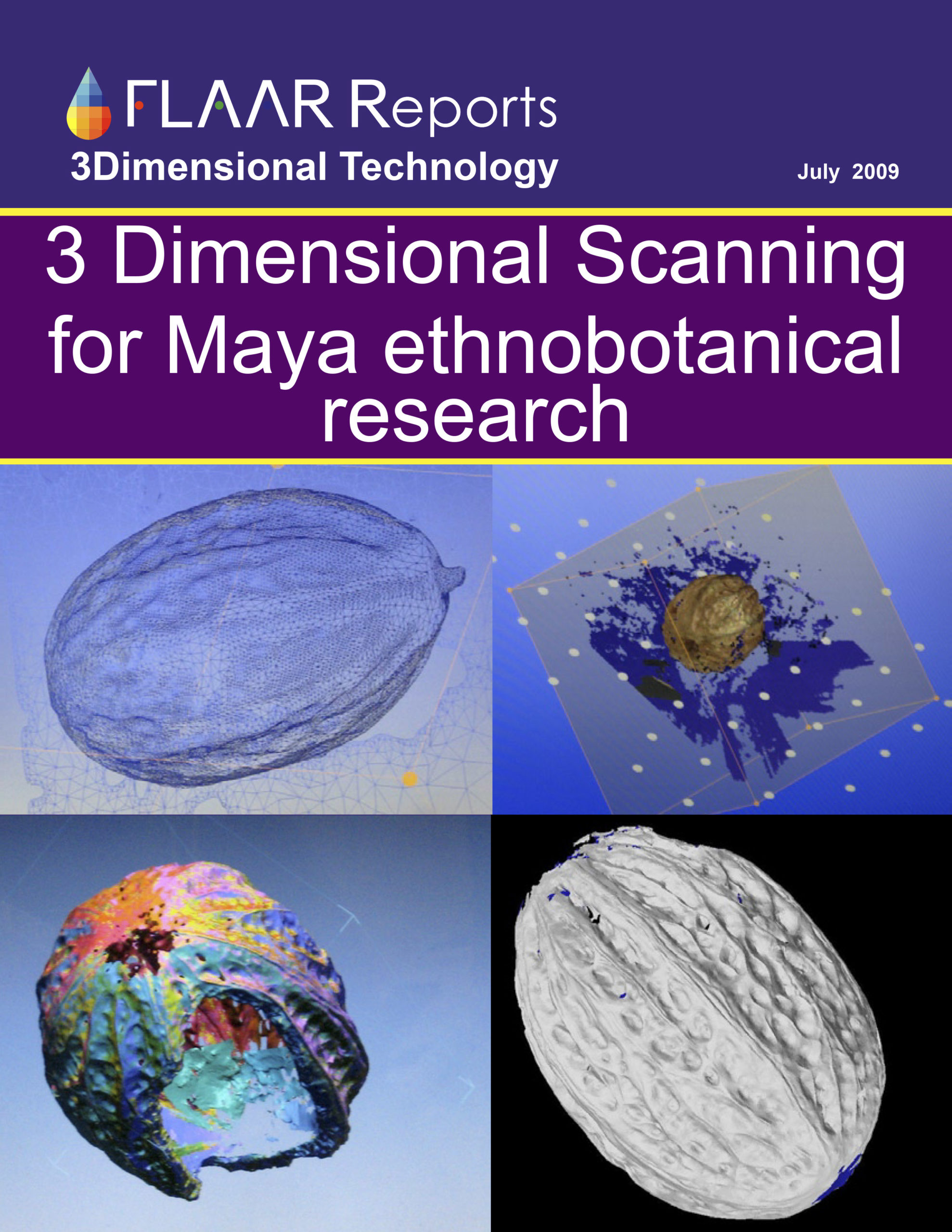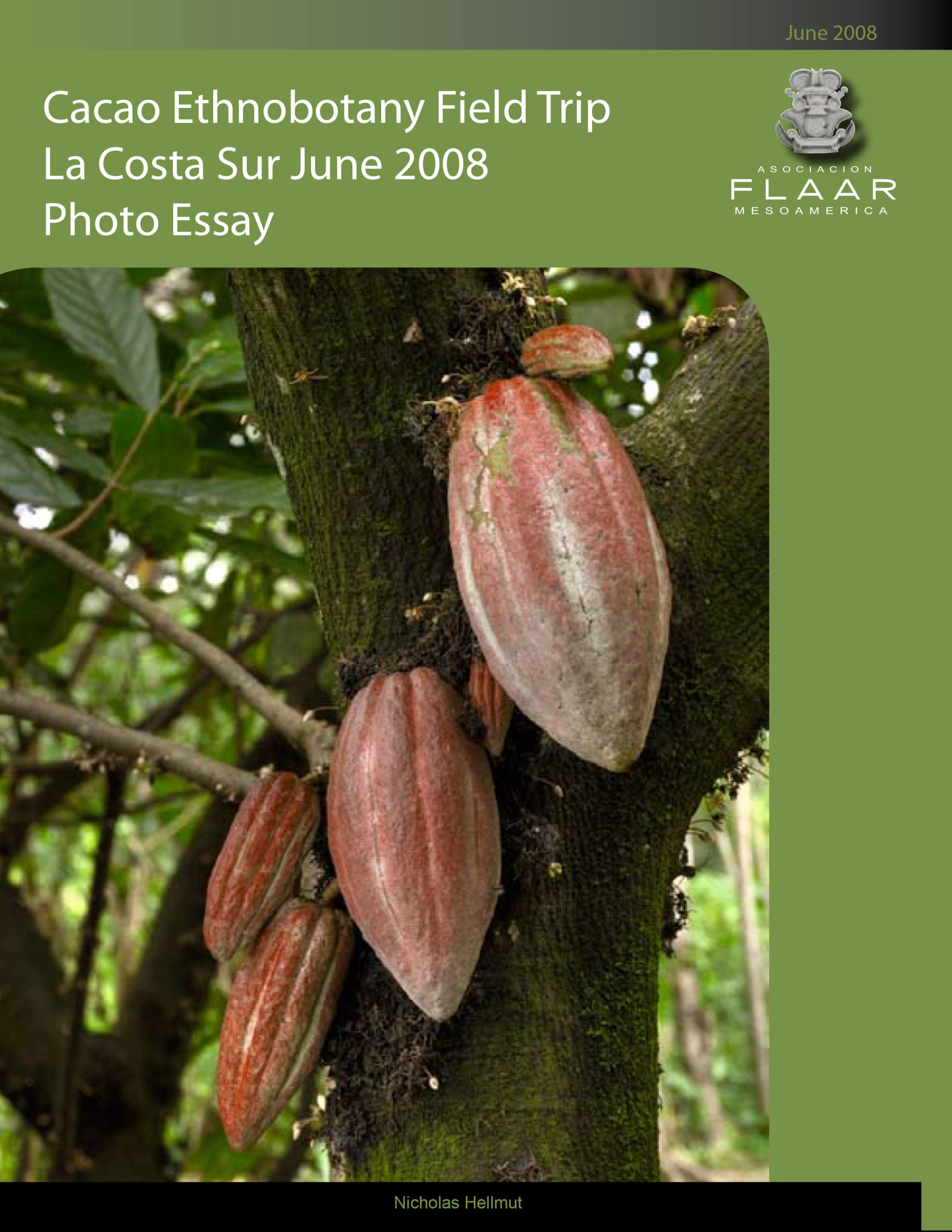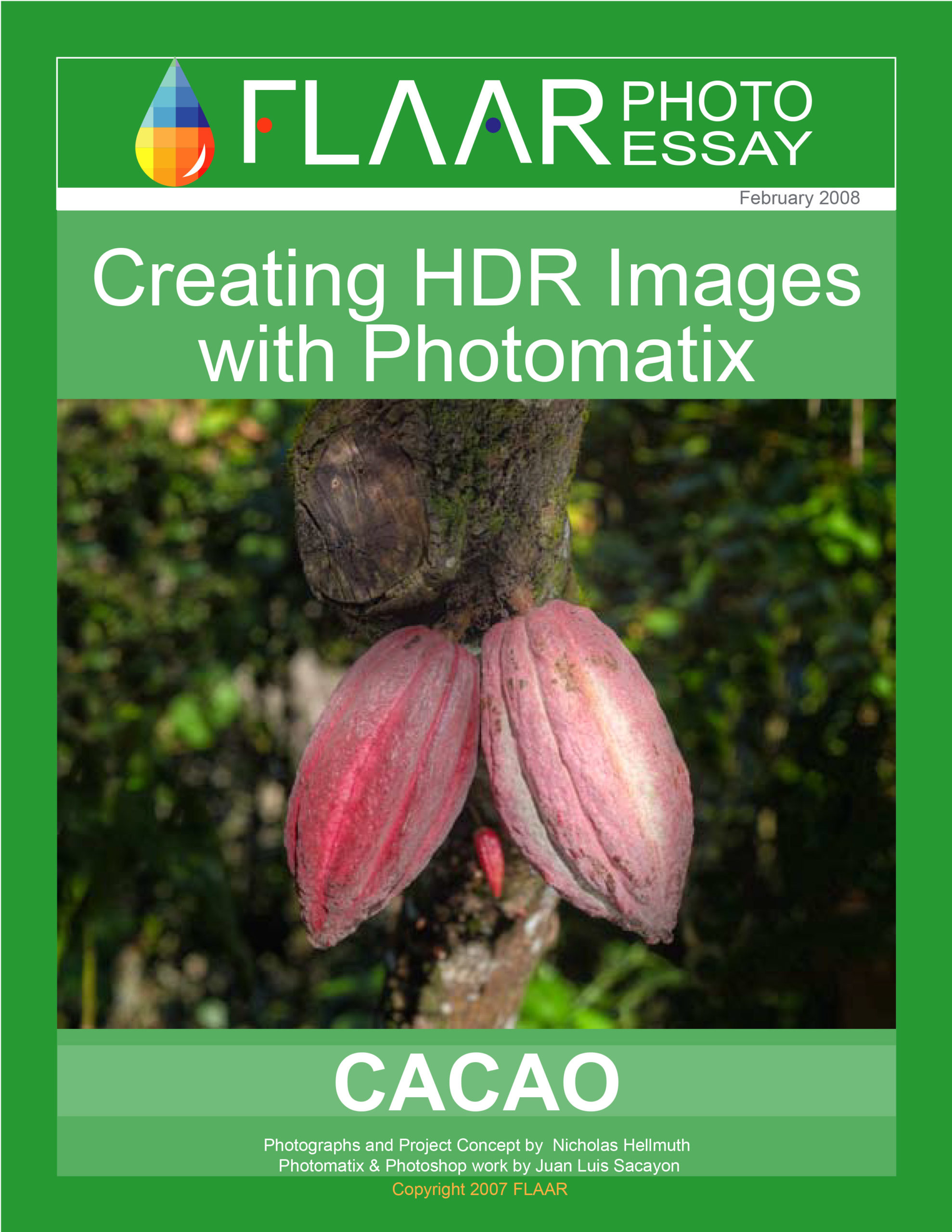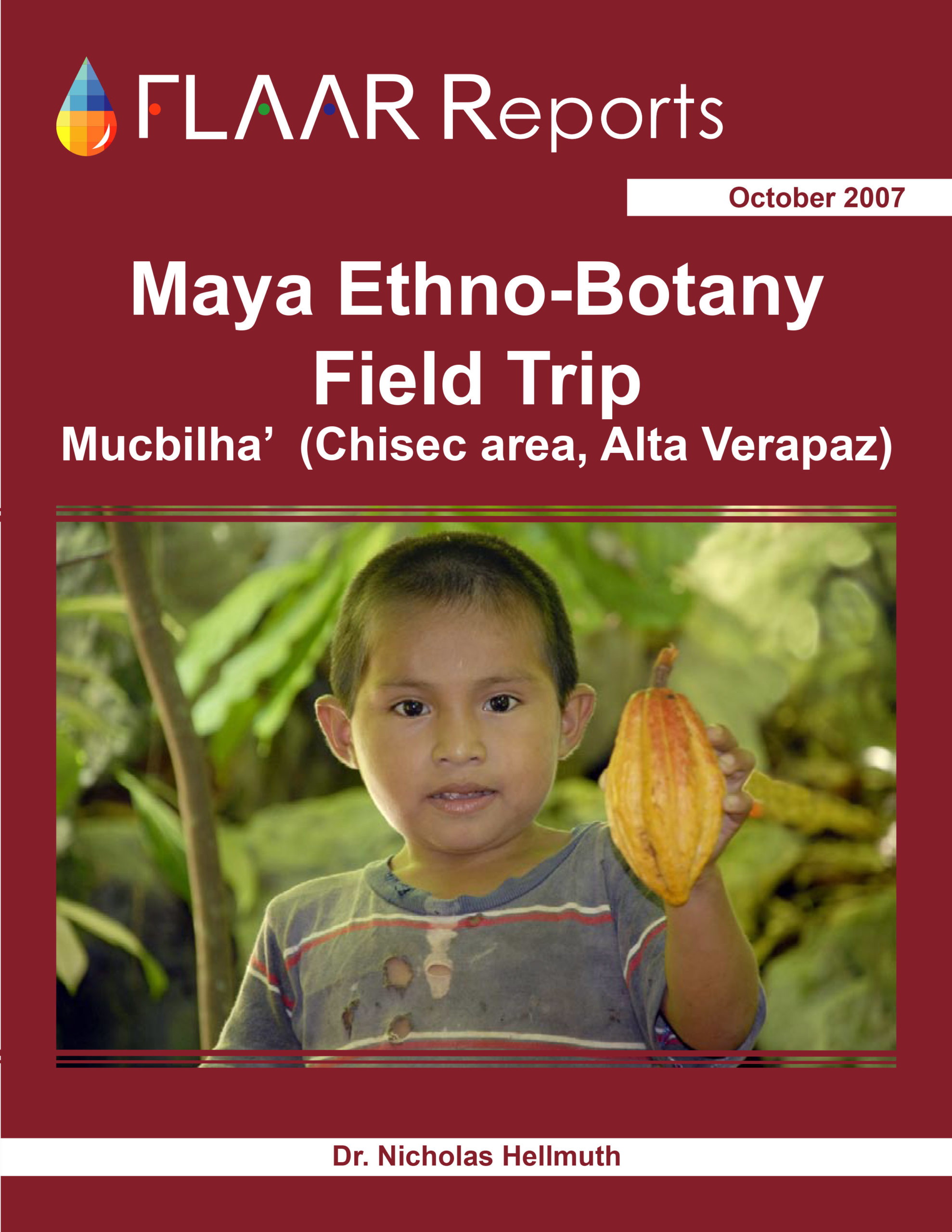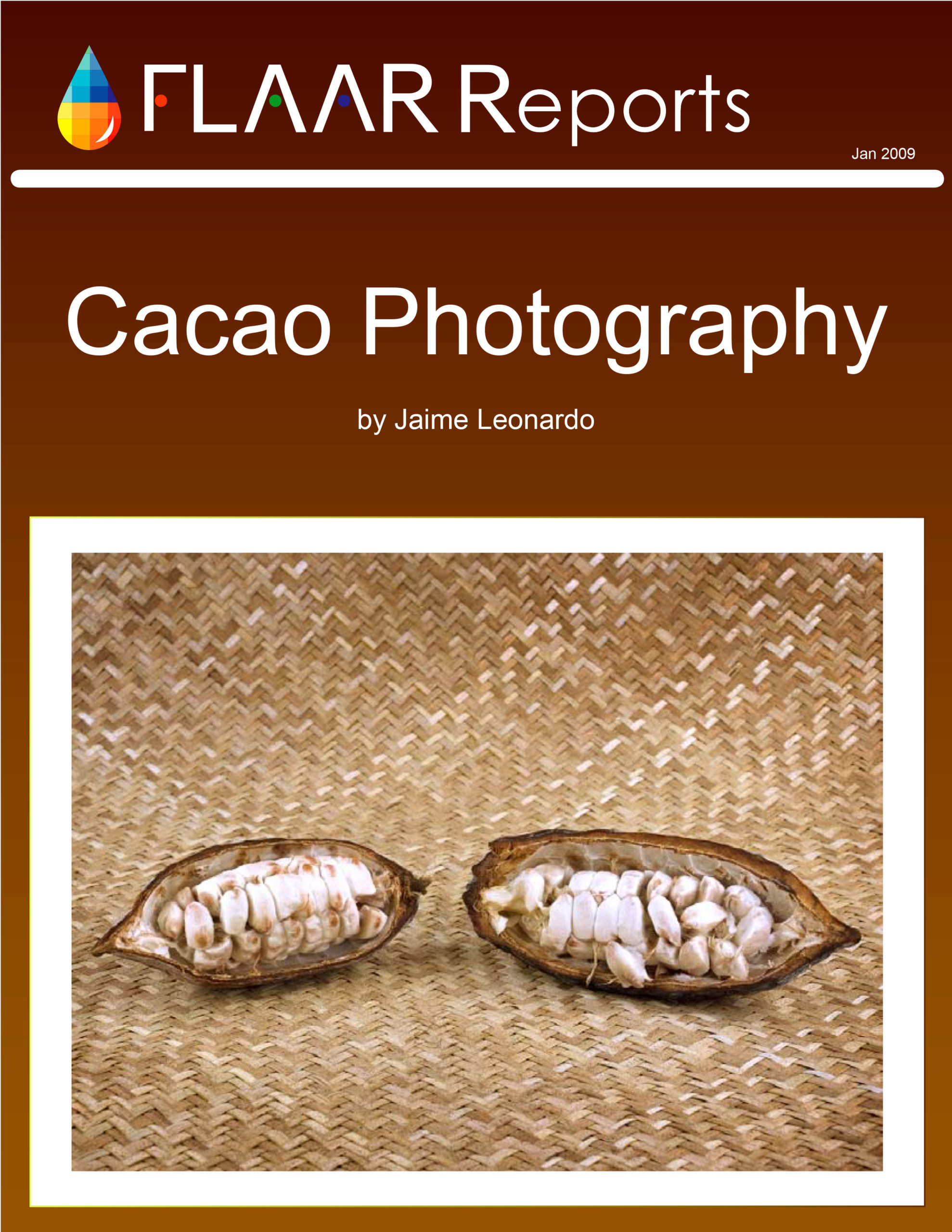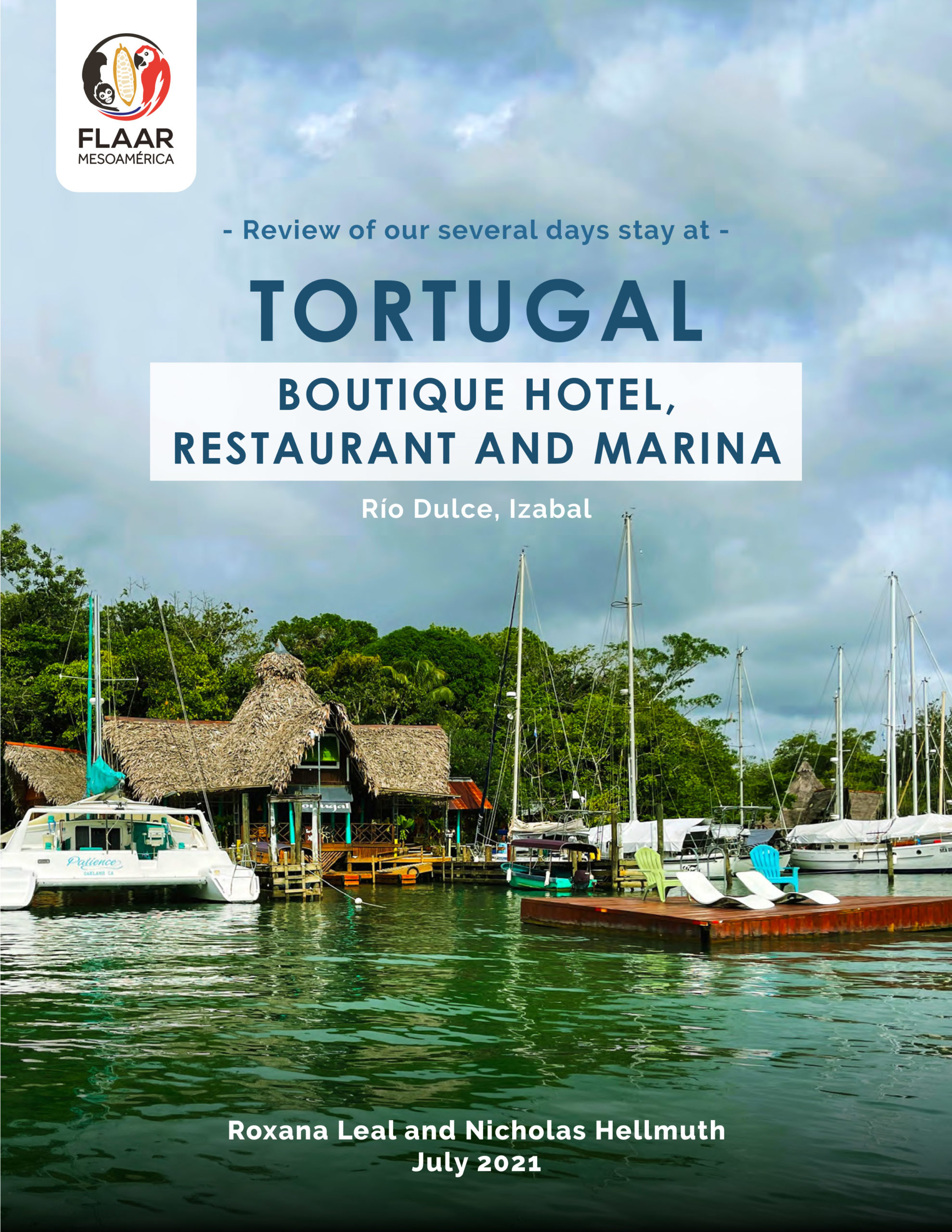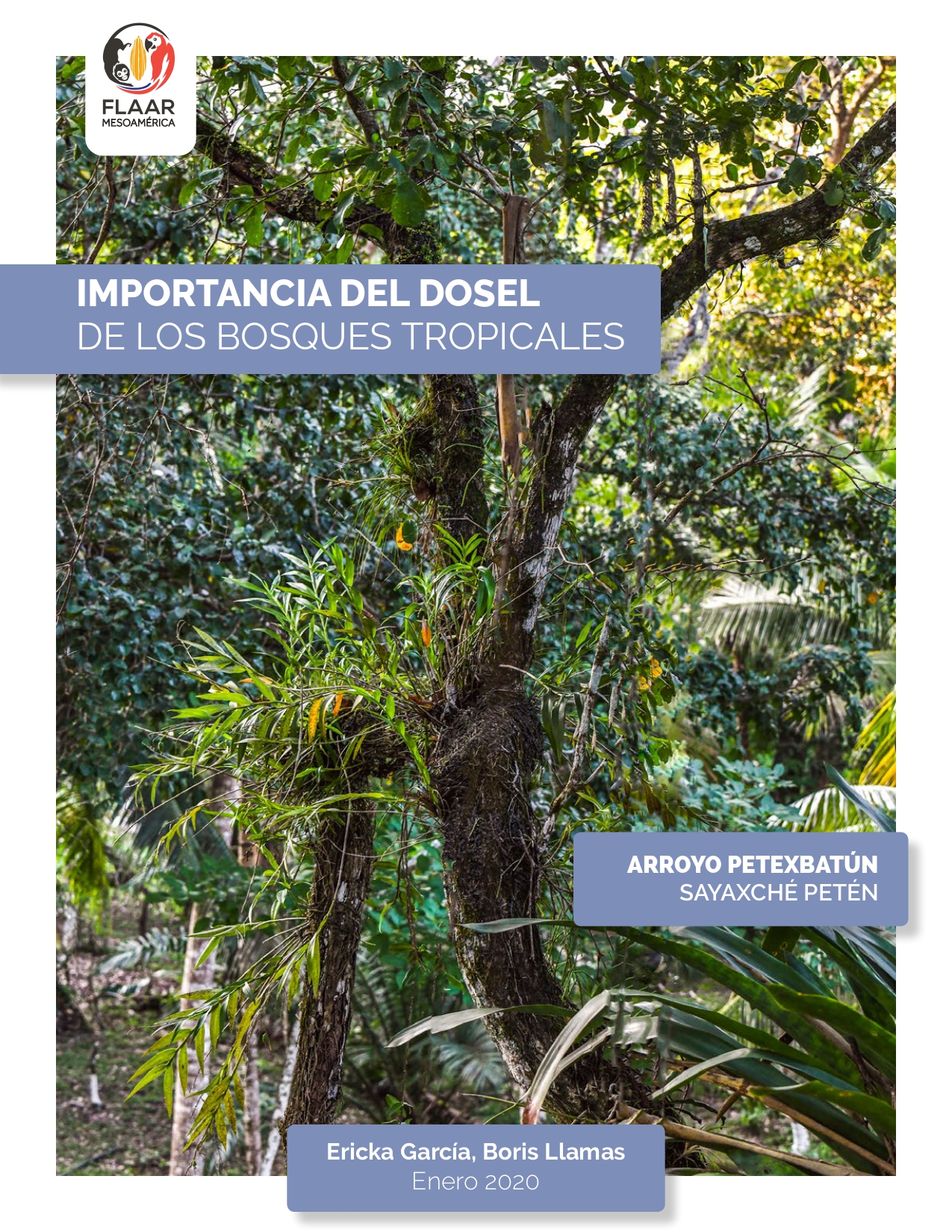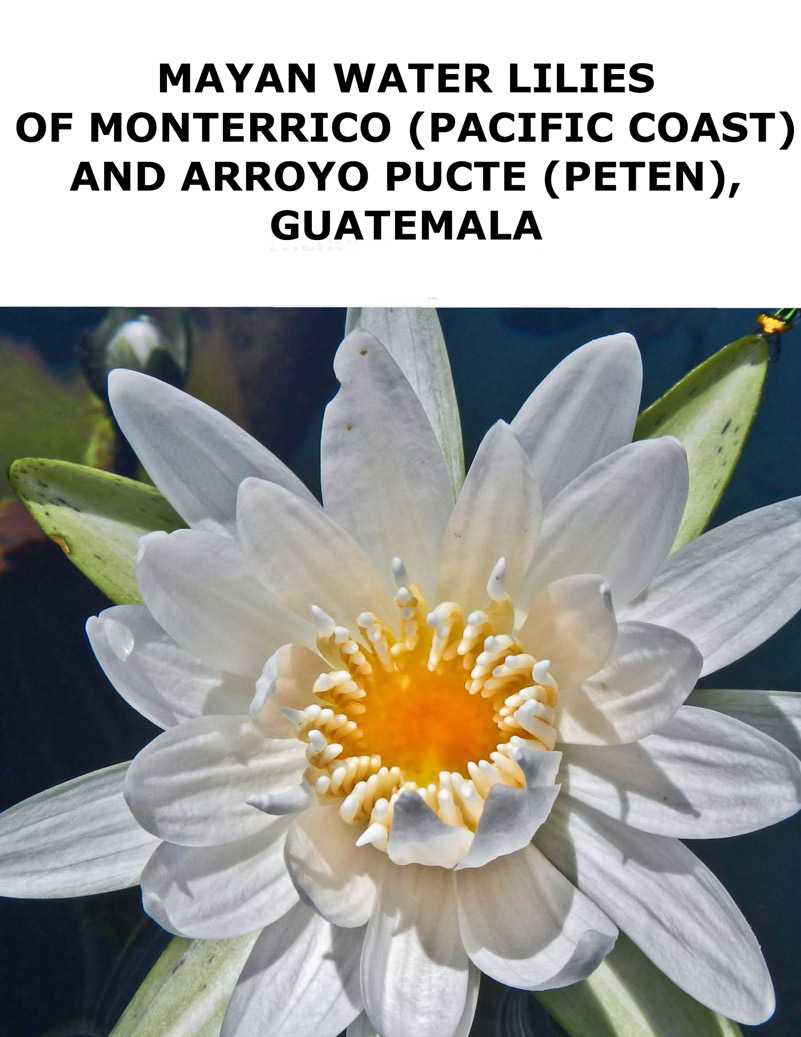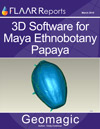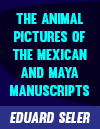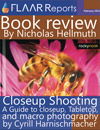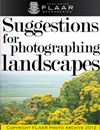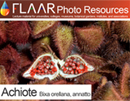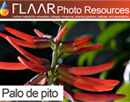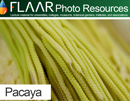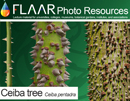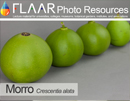When time and funding permit, each flower (each plant species) will have its own page, and its own PDF, and eventually its own PPT so that professors and students have plenty of material on Guatemala (and Honduras, etc) to study.
Heliconia adflexa, Coban, Guatemala, Hotel Monja Blanca, FLAAR, by Nicholas Hellmuth
This space is for flowers
we have recently found and photographed.
|
| Share
|
| All four mangrove tree species of Guatemala are in Pacific coastal inland swamp of Manchón Guamuchal |
|
Mangrove tree species in Manchón Guamuchal, Pacific Ocean coast Swamps are a significant portion of the landscape of Guatemala. I have explored the swamps on the southwest side of Yaxha in the 1970’s, the tinto (Palo de Campeche) swamps of Arroyo Pucte (tributary of Rio de la Pasion, 1970’s into 1990’s), and during the last 10 years have been learning about the diverse kinds of swamps in the CECON preservation area to the north and northwest of Monterrico.
Decades ago I explored the swamps of Tabasco, Campeche, and Quintana Roo, Mexico. You can see the remains of mangrove swamps being taken over by expanding villages in Belize and all parts of Mesoamerica. This week I ventured into the mangrove swamps of Manchón Guamuchal, west of Champerico, Guatemala. These eco-systems are under the protection of CONAP. Four species of mangrove can be studied here. Here we show the roots of Rhizophora mangle.
Trees of Guatemala is the most complete single book on the trees of Guatemala: 1033 pages. So if you find it easier not to have to sort through five or more monographs by Standley, Steyermark and co-worker; you can get it all in Parker’s compilation. The difference is that Standley, Steyermark, Williams and their colleagues of the Natural History Museum of Chicago did actual field work, day after day, month after month, year after year. The contribution of Parker is to take all their multiple volumes, plus the work of all other botanists, and copy-and-paste it into one single easy-to-use volume. Downside is there are no citations whatsoever for each species: the sources are mentioned only for the family, at the end of the chapter on the family. One probable reason for zero citations is because it would make the text so ridiculous and for all the trees would add so many dozens of pages that the book would be too heavy to carry. But nowadays, with Google, after you know the scientific name, and which one of the Chicago monographs the trees are in, you can find what she copied from on the Internet. For Mangrove trees it would be Standley and Williams 1962, Fieldiana: Botany, Vol. 24, Part VII, No. 2, pp. 187-281. Not a peep about the root size, shape, structure! Parker’s book on Trees of Guatemala is the best single research for tree research. But it is 90% copy-and-paste from Standley, Steyermark, etc. So there is not one word about the impressive root structures of any mangrove species. So I would like to illustrate the remarkable roots of one of the species of mangrove trees in the Manchón Guamuchal area. Where to stay to visit Manchón Guamuchal? Lots of hotels in Retalhuleu. Did not check Champerico. Downside is that by the time you have breakfast and drive all the way to Manchón Guamuchal you will miss the early morning birding hours. There is one hotel at Manchon, Casa Mar Azul, but since it was sold out we stayed in the village of Chico, in a local posada. This reminded me of my backpacking days half a century ago. Everyone was pleasant, but if you need a fancy hotel, then reserve earlier to stay on the coast. There is no way to get your car to Chico; you park it at Manchon and then take a boat to Chico. Everyone in Chico is friendly and pleasant. The thousand-year old style of domestic architecture of Chico is an experience you will not get in Paris or London. Additional information on Mangrove species in Municipio de Livingston Since 2020 we have been accomplishing monthly ethnobotanical and botanical field work in the Municipio de Livingston. While doing library research I was pleasantly surprised to learn that in other areas of the Americas that both black mangrove and red mangrove had edible parts. We will be publishing new web pages on these species in coming months of 2021. Most recently updated: July 10, 2021 |
Parque Nacional Yaxha, Nakum and Naranjo
Carnivorous Plants
Plants of Municipio de Livingston, Izabal
- Acrostichum danaeifolium, giant leather ferns
- Bellucia Pentamera
- Bibliography on Grias cauliflora
- Bibliography on Licania platypus
- Bibliography on Mangle negro (Avicennia germinans) L.
- Bibliography on Montriacardia arborescens
- Bibliography on Typha domingensis and Thypha latifolia
- Conocarpus erectus, white mangrove
- Edible Wetlands Plants, Hotel Tortugal
- Heliconia latispatha
- Heliconia wagneriana
- Manicaria saccifera Confra palm
- Neotropical trees of Guatemala need protection
- Nymphoides indica, waterlily flowers
- Pachira aquatica, zapoton
- Bibliography on Pithecellobium Mart., Neotropical trees of Mesoamerica
Ecosystems, Wetlands Aquatic Plants
Smartphone Camera Reviews
Bushes and small trees
Fungi and Lichens
Orchids
- Bibliography Bletia purpurea, aquatic orchid
- Bibliography, Epidendrum radicans
- Bibliography on Habenaria Orchids from Yaxha
- Bibliography, Lycaste virginalis var. alba.
- Bibliography, Macroclinium bicolor
- Bibliography, Prosthechea cochleata
- Bibliography Sobralia macrantha, Lirio de San Juan
- Bibliography, Sobralia xantholeuca
- Bibliography on Terrestrial shade orchids from Guatemala
- Bibliography on Terrestrial sunny orchids from Guatemala
Botanical Terms
Maya and Aztec flavorings for cacao, cocoa, chocolate
- Achiote, Bixa orellana
- Bibliography on Achiote, Bixa orellana
- Bibliography on Esquisúchil, Bourreria huanita
- Bourreria huanita
- Cassia grandis, bucut
- Chile Chocolate
- Chile Chocolate (Capsicum annuum var accuminatum)
- Chiranthodendron pentadactylon
- Cymbopetalum penduliflorum
- Guazuma ulmifolia
- Haematoxylum brasiletto
- Piper auritum, hoja santa
- Piper species
- Quararibea funebris
- Sterculia apetala, castaño
- Tagetes sp., Marigold
- Talauma, a variant of Magnolia
- Vanilla orchid
- Virola and nutmeg
Cacao, cocoa, chocolate
Consulting cacao & Theobroma species
Tobacco Ingredients of Aztec & Maya
Trees of Mesoamerica
- Bibliography on Acacia dolichostachya, Wild tamarind
- Bibliography, Bellucia costaricensis
- Bibliography, Bucida buceras
- Bibliography on Coccoloba belizensis Standl.
- Bibliography on Cojoba sp. and Cojoba arborea
- Bibliography, Ficus.
- Bibliography on Haematoxylum campechianum and H. brasiletto
- Bibliography on Hibiscus pernambucensis
- Bibliography on Ipomea murucoides
- Bibliography on Lacmellea standleyi, lechemiel
- Bibliography on Leucaena leucocephala
- Bibliography on mangle rojo (Rhizophora mangle)
- Bibliography on Manzanillo, Alseis yucatanensis Standl.
- Bibliography on Matilisguate, Tabebuia rosea
- Mangrove swamp Trees
- Bibliography on Ruagea insignis
- Bibliography on Pterocarpus officinalis
Bombacaceae, Bombacoideae
Tropical Fruits of the Maya
- Avocado Hass
- Bibliography on Coloc, Talisia floresii
- Bibliography, Dichogamy of avocado species
- Bibliography on Guayo, Talisia olivaeformis
- Bibliography on Laetia thamnia, Bakelac
- Bibliography on Maracuyá, Passiflora quadrangularis L.
- Bibliography on Punica granatum L., Granada
- Cashew
- Cuajilote, Parmentiera aculeata
- Granada
- Guanabas and Annonas
- Guava, Guayaba, Psidium guajava L
- Introduction to Papaya
- Nance a fruit of prehispanic Guatemala
- Passion flowers and fruits
- Passion flower, giant fruit
- Talisia floresii, Sapindaceae
- Carica Papaya Bibliography
Tropical Nuts
Spices, condiments, food coloring
Medicinal Plants
- Aristolochia, The largest flower in Guatemala, Bibliography
- Asclepias curassavica, bibliography
- Bibliography on Ciricote, Cordia dodecandra
- Bibliography on Contrahierba, Dorstenia contrajerva
- Bibliography on Falso hibisco, Malvaviscus arboreus
- Bibliography on Huele de noche, Cestrum nocturnum
- Bibliography on Lirio araña, Hymenocallis littoralis
- Bibliography on Roble Prieto, Ehretia tinifolia
- Bibliography, Tithonia diversifolia
- Canak
- Calliandra general info
- Guava, Guayaba
- Magnolia and Taluma
- Mayan medicinal plants
- Piper
- Tecomasuche, Coclospermum vitifolium
- Bibliography on Sufricay, Malmea depressa
- Bibliography on Wigandia urens
Underutilized edible plants
Edible Plants of the Mayan World
- Acacia, subin, bullhorn acacia
- Bibliography, Annona muricata
- Bibliography, Annona purpurea
- Bibliography, Annona reticulata
- Bibliography on Chipilín, Crotalaria longirostrata
- Bibliography on Chirimoya, Annona squamosa
- Bernoullia flammea
- Canna indica, tamale wrap
- Cuchamper, Gonolobus
- Guava, Guayaba
- Bibliography, Gonobolus sp.
- Bibliography, Parmentiera aculeata
- Pacaya palm Chamaedorea tepejilote
- Split leaf philodendron, Monstera deliciosa
Plants and trees used to produce incense
Utilitarian Plants
- Bibliography, Acacia farnesiana
- Bibliography on Aechmea bromeliifolia
- Bibliography on Agave americana
- Bibliography, native Agave species from Guatemala
- Bibliography on Anthurium crassinervium (Jacq.) Schott
- Bibliography on Balsa, Ochroma pyramidale
- Bibliography on Bamboo, Guadua longifolia (E.Fourn) R.W.Pohl
- Bibliography, Crescentia alata
- Bibliography, Crescentia cujete
- Bibliography on Hule, Castilla elastica
- Blepharidium guatemalense, irayol blanco
- Crescentia alata, Crescentia cujete
- Tecomasuche, Coclospermum vitifolium
- Bibliography on Coxte, Colubrina arborescens
- Bibliography on Madre cacao, Gliricidia sepium
- Bibliography on Tillandsia usneoides
